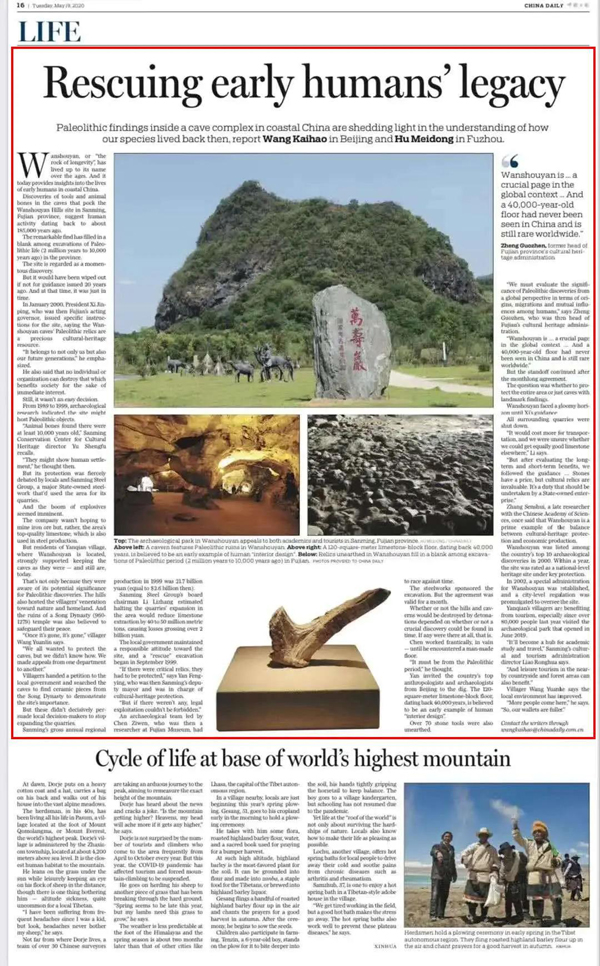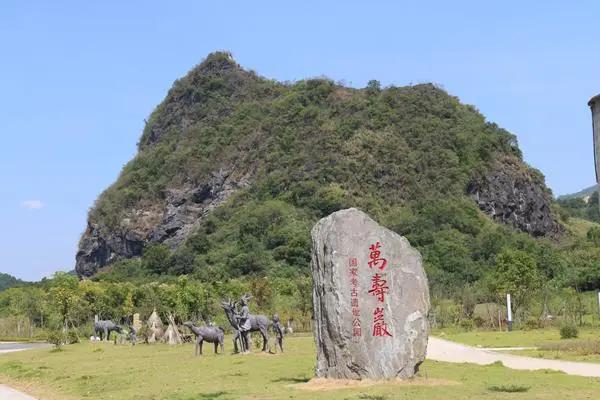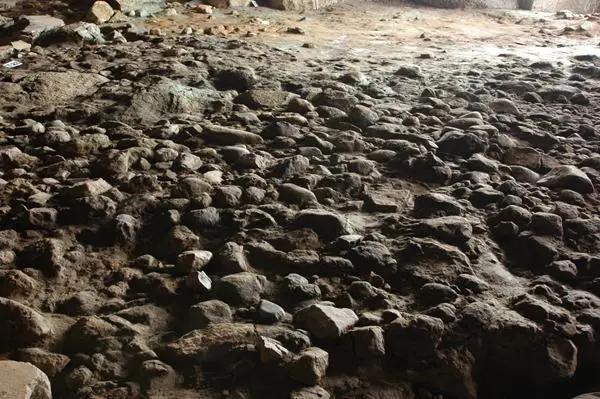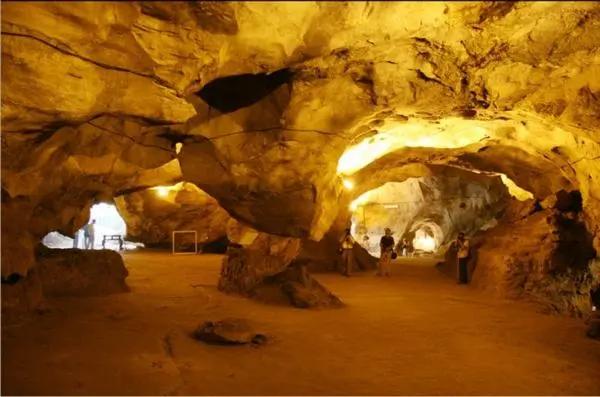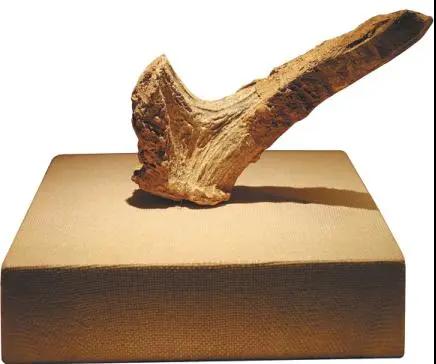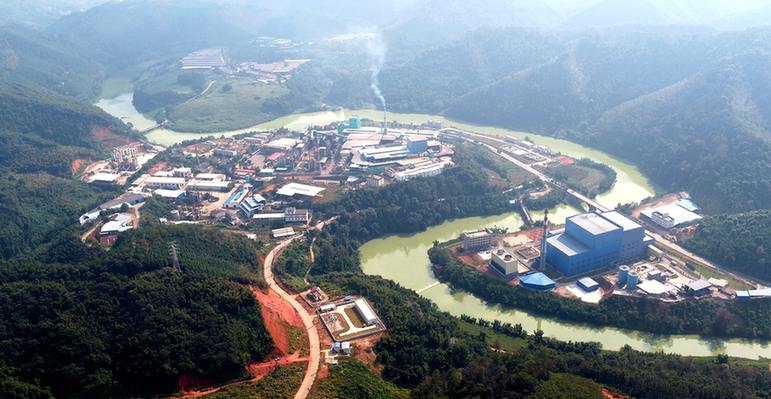近日,万寿岩持续受关注 今天,又上了CHINA DAILY(《中国日报》) “让世界了解中国,让中国走向世界” 《中国日报》是中国唯一的国家级英文日报 发行至150多个国家和地区 被国内外誉为中国最具权威性的英文媒体之一
Rescuing early humans' legacy Paleolithic findings inside a cave complex in coastal China are shedding light in the understanding of how our species lived back then, report Wang Kaihao in Beijing and Hu Meidong in Fuzhou.
The archaeological park in Wanshouyan appeals to both academics and tourists in Sanming, Fujian province.[Photo by Hu Meidong/China Daily] Wanshouyan, or "the rock of longevity", has lived up to its name over the ages. And it today provides insights into the lives of early humans in coastal China. Discoveries of tools and animal bones in the caves that pock the Wanshouyan Hills site in Sanming, Fujian province, suggest human activity dating back to about 185,000 years ago. The remarkable find has filled in a blank among excavations of Paleolithic life (2 million years to 10,000 years ago) in the province. The site is regarded as a momentous discovery. But it would have been wiped out if not for guidance issued 20 years ago. And at that time, it was just in time. In early 2000, President Xi Jinping, who was then Fujian's acting governor, issued specific instructions for the site, saying the Wanshouyan caves' Paleolithic relics are a precious cultural-heritage resource. "It belongs to not only us but also our future generations," he emphasized.
A 120-square-meter limestone-block floor, dating back 40,000 years, is believed to be an early example of human "interior design".[Photo provided to China Daily] He also said that no individual or organization can destroy that which benefits society for the sake of immediate interest. Still, it wasn't an easy decision. From 1989 to 1999, archaeological research indicated the site might host Paleolithic objects. "Animal bones found there were at least 10,000 years old," Sanming Conservation Center for Cultural Heritage director Yu Shengfu recalls. "They might show human settlement," he thought then. But its protection was fiercely debated by locals and Sanming Steel Group, a major State-owned steelwork that'd used the area for its quarries. And the boom of explosives seemed imminent. The company wasn't hoping to mine iron ore but, rather, the area's top-quality limestone, which is also used in steel production. But residents of Yanqian village, where Wanshouyan is located, strongly supported keeping the caves as they were-and still are, today. That's not only because they were aware of its potential significance for Paleolithic discoveries. The hills also hosted the villagers' veneration toward nature and their homeland. And the ruins of a Song Dynasty (960-1279) temple was also believed to safeguard their peace.
A cavern features Paleolithic ruins in Wanshouyan.[Photo provided to China Daily] "Once it's gone, it's gone," villager Wang Yuanlin says. "We all wanted to protect the caves, but we didn't know how. We made appeals from one department to another." Villagers handed a petition to the local government and searched the caves to find ceramic pieces from the Song Dynasty to demonstrate the site's importance. But these didn't decisively persuade local decision-makers to stop expanding the quarries. Sanming's gross annual regional production in 1999 was 21.7 billion yuan (equal to $2.6 billion then). Sanming Steel Group's board chairman Li Lizhang estimated halting the quarries' expansion in the area would reduce limestone extraction by 40 to 50 million metric tons, causing losses grossing over 2 billion yuan. The local government maintained a responsible attitude toward the site, and a "rescue" excavation began in September 1999. "If there were critical relics, they had to be protected," says Yan Fengying, who was then Sanming's deputy mayor and was in charge of cultural-heritage protection. "But if there weren't any, legal exploitation couldn't be forbidden." An archaeological team led by Chen Ziwen, who was then a researcher at Fujian Museum, had to race against time. The steelworks sponsored the excavation. But the agreement was valid for a month. Whether or not the hills and caverns would be destroyed by detonations depended on whether or not a crucial discovery could be found in time. If any were there at all, that is.
Relics unearthed in Wanshouyan fill in a blank among excavations of Paleolithic period (2 million years to 10,000 years ago) in Fujian.[Photo provided to China Daily] Chen worked frantically, in vain-until he encountered a man-made floor. "It must be from the Paleolithic period," he thought. Yan invited the country's top anthropologists and archaeologists from Beijing to the dig. The 120-square-meter limestone-block floor, dating back 40,000 years, is believed to be an early example of human "interior design". Over 70 stone tools were also unearthed. "We must evaluate the significance of Paleolithic discoveries from a global perspective in terms of origins, migrations and mutual influences among humans," says Zheng Guozhen, who was then head of Fujian's cultural heritage administration. "Wanshouyan is … a crucial page in the global context … And a 40,000-year-old floor had never been seen in China and is still rare worldwide." But the standoff continued after the month-long agreement. The question was whether to protect the entire area or just caves with landmark findings. Wanshouyan faced a gloomy horizon until Xi's guidance. All surrounding quarries were shut down. "It would cost more for transportation, and we were unsure whether we could get equally good limestone elsewhere," Li says. "But after evaluating the long-term and short-term benefits, we followed the guidance … Stones have a price, but cultural relics are invaluable. It's a duty that should be undertaken by a State-owned enterprise." Zhang Senshui, a late researcher with the Chinese Academy of Sciences, once said that Wanshouyan is a prime example of the balance between cultural-heritage protection and economic production. Wanshouyan was listed among the country's top 10 archaeological discoveries in 2000. Within a year, the site was rated as a national-level heritage site under key protection. In 2002, a special administration for Wanshouyan was established, and a city-level regulation was promulgated to oversee the site. Yanqian's villagers are benefiting from tourism, especially since over 80,000 people last year visited the archaeological park that opened in June 2019. "It'll become a hub for academic study and travel," Sanming's cultural and tourism administration director Liao Ronghua says. "And leisure tourism in the nearby countryside and forest areas can also benefit." Villager Wang Yuanhe says the local environment has improved. "More people come here," he says. "So, our wallets are fuller." |
- 分享到:




2、本网未注明“来源:三元新闻网”的文/图等稿件均为转载稿,本网转载出于传递更多信息之目的,并不意味着赞同其观点或证实其内容的真实性。如其他媒体、网站或个人从本网下载使用,必须保留本网注明的“来源”,并自负版权等法律责任。如擅自篡改为“来源:三元新闻网”,本网将依法追究责任。如对文章内容有疑议,请及时与我们联系。
- 主管单位:中共三元区委宣传部 地址:三元区政府大楼宣传部
- 热线:0598-8220165 投稿邮箱:syxww8393106@163.com
- 互联网新闻信息服务许可证 闽ICP备2023011923号-1 编号:35120210045
- 互联网新闻信息服务许可证编号:35120210045 中文域名:三明市三元区融媒体中心.公益
- 全国互联网违法信息举报电话:12377 举报网址:http://www.12377.cn


 人大之窗
人大之窗 委员之家
委员之家